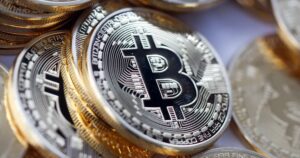Cardano, one of the leading blockchain platforms, is making headlines with a bold new strategy: converting a portion of its ADA treasury into Bitcoin and stablecoins. This move, proposed by Cardano founder Charles Hoskinson, aims to position Cardano as a serious contender in the decentralized finance (DeFi) space and strengthen its long-term financial resilience .
Why is Cardano Considering Bitcoin and Stablecoins?
On June 13th, Charles Hoskinson suggested that Cardano should establish a sovereign wealth fund by converting 5–10% of its ADA treasury—worth around $1,2 billion—into “harder” assets like Bitcoin and tokenized dollars (stablecoins) . The idea is inspired by traditional sovereign wealth funds, such as Norway’s Government Pension Fund, which diversify holdings to capture broader market gains and reduce risk.
For Cardano, the rationale is twofold:
• Diversification and Stability: Bitcoin is widely recognized as a digital store of value, with a fixed supply and robust security. By holding Bitcoin, Cardano can hedge against the volatility of ADA and the broader crypto market .
• DeFi Ecosystem Growth: Stablecoins are essential for DeFi applications, providing a reliable anchor for lending, borrowing, and trading. Increasing stablecoin liquidity could make Cardano’s DeFi ecosystem more attractive and competitive, especially compared to platforms like Solana and Ethereum, which currently dominate in total value locked (TVL) and user activity .
How Would the Transition Work?
The plan involves gradually selling ADA—about 5–10% of the treasury—using over-the-counter (OTC) desks and a time-weighted average price (TWAP) strategy. This approach is designed to minimize market impact and avoid sudden price drops for ADA holders . The proceeds would then be allocated to Bitcoin and leading stablecoins, with the potential to use future gains to buy back ADA, similar to stock buyback strategies in traditional finance.
Potential Risks and Rewards
• Short-Term Price Pressure: Selling a significant amount of ADA could temporarily depress its price. However, spreading out the sales and using OTC channels should help mitigate this effect .
• Long-Term Value Creation: If Bitcoin and stablecoins appreciate or generate yield, Cardano could use these profits to repurchase ADA, supporting its price and rewarding the community .
• DeFi Competitiveness: With more stablecoin liquidity, Cardano’s DeFi apps could see increased activity, making the ecosystem more robust and less reliant on speculative tokens.
Context in the Crypto Landscape
Cardano’s move comes as the platform seeks to catch up with faster, more active blockchains like Solana and Ethereum. While Cardano has made significant progress in smart contracts and dApps, its DeFi adoption and transaction speeds still lag behind the leaders . By diversifying its treasury and boosting stablecoin presence, Cardano aims to attract more users and developers, ultimately driving growth and innovation.
The Bottom Line
Cardano proposal to convert part of its ADA treasury into Bitcoin and stablecoins is a calculated bet on diversification and DeFi growth. While there are short-term risks, the long-term vision is to create a more resilient and competitive ecosystem. As the crypto market matures, such strategic moves could set Cardano apart and pave the way for broader adoption.






